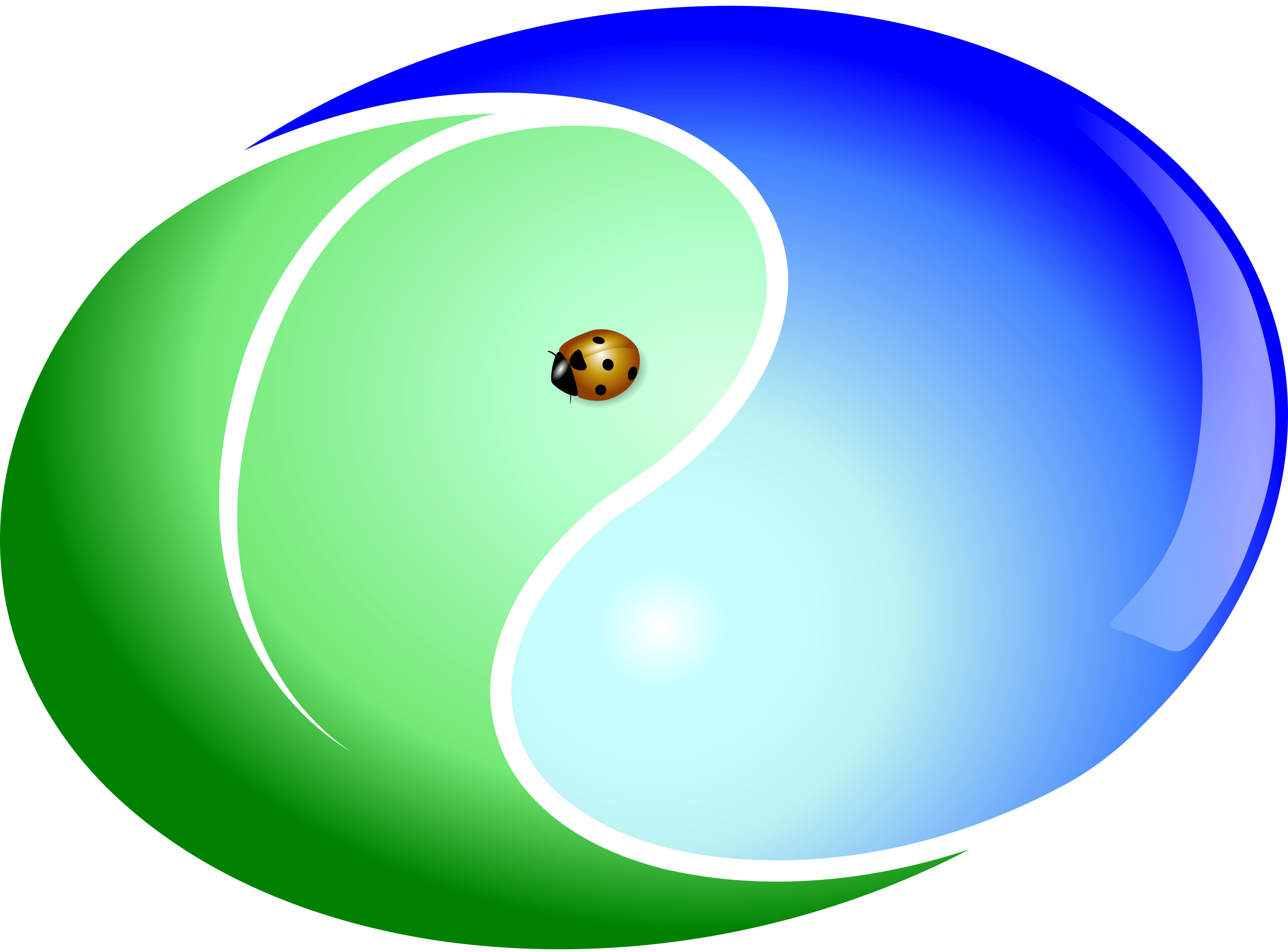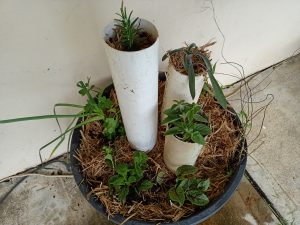A swale is a trench dug on perfect contour which fills with water when it rains and soaks into the soil rather than being lost down the hill possibly creating erosion as it goes.
Deep pipe irrigation is a watering technique where a piece of pipe filled with holes is buried vertically in the ground next to a tree and the tree is then watered via this pipe. As a result, the tree roots grow deep into the soil to locate the water. Typical watering techniques using a hose or sprinkler only water the soil surface which usually does not penetrate very deeply and also allows water to evaporate off. As a result, tree roots remain very shallow as they remain where the water is (at the surface of the soil).
I am not a fan of buring plastic in my garden where it will then remain forever (as the tree grows the roots will eventually grow into the pipe and possibly crush it making it almost impossible to remove). So I decided to do the deep pipe irrigation method WITHOUT the pipe.
If you are installing this watering method at the time of planting your tree then you may have no option but to use a buried piece of PVC pipe since you will need something to hold back the loose soil to create the watering reservoir. In my situation, my trees had already been planted so using an open hole without the pipe was not a problem.
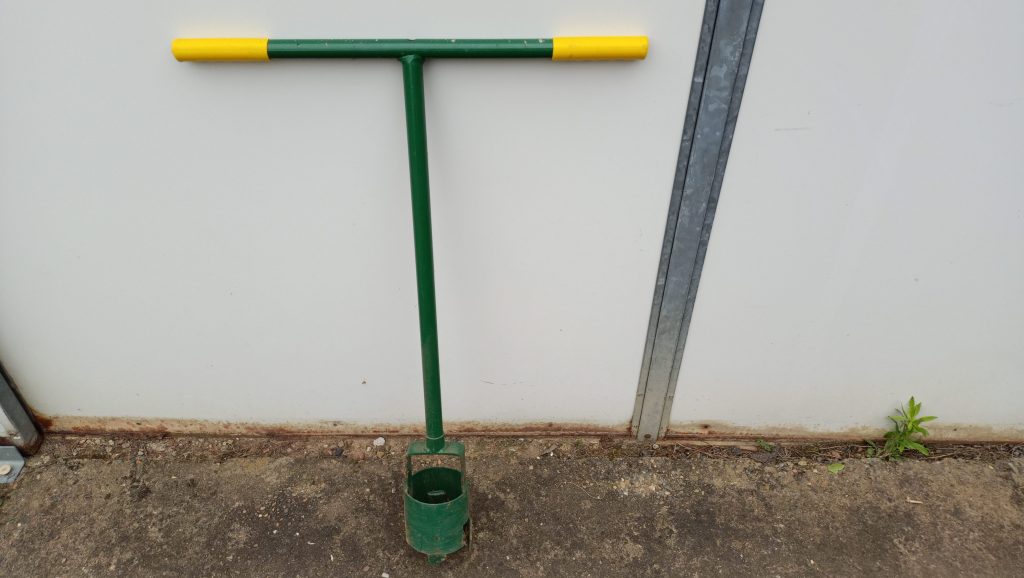
I purchased a 100mm post hole digger for the job. This being the perfect size for an irrigation hole next to my fruit trees. Note also that if you do choose to use a piece of PVC pipe to do this deep watering method at home then a 90mm PVC will slide easily down the hole dug by the 100mm post hole digger. This is the quickest and easiest way to bury the pipe when retrofitting.
You want to place your hole up-slope to your tree so that the water from your reservoir travels downhill TOWARDS your tree rather than away from it. The only acception to this rule is if your tree is in a windy location (although ideally you should have a wind break in such circumstances). If in a windy position the hole should be dug UPWIND (ie on the side that is the main direction of the prevailing winds). This is because trees in windy positions grow their roots towards the direction of the wind as this makes the tree more stable. For a larger tree you may want to dig two or three holes around the trunk to encourage even root growth.
I dug my hole beside my fruit trees upslope and about 400mm from the base of my tree. Ideally I would have liked to go down one meter, however, I start to hit clay and shale at about 300mm in my garden so it becomes more difficult to dig. Just get down as deep as you can – anything is better than nothing at all. When the hole fills the water will soak out from the sides of the hole with the majority of it going towards the bottom – this will promote deep root growth while still allowing access to water for the tree roots when the tree is still small.
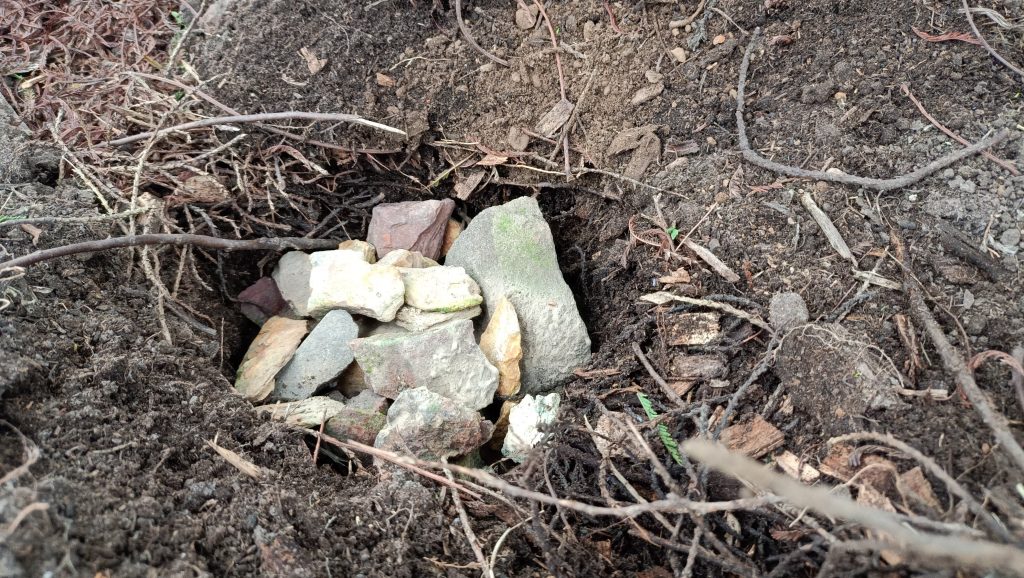
After the hole was dug I then filled this to the top with rocks from around the property. You can use anything that is handy – sticks, rocks, bamboo, stuff the hole with hessian bags, etc. Even pebbles, mulch or sand will do the trick but the more gaps that you have for water to penetrate the better. Filling the hole will keep it from collapsing in and also prevent any wildlife from falling in and becoming trapped.
After that I dug a mini-swale (often called “fishscale” swales) that will catch water as it runs down the hill and will feed into my irrigation hole. You can make the swale longer to channel more water to the tree depending on how much water it likes (just be careful not to overdo it and drown your fruit tree).

Over time, the gaps around the rocks will eventually fill in with soil and organic matter but by then my fruit tree will be large enough with a deep, strong root mass and will no longer need my irrigation system anyway.
The image below shows a top view of how this should look.
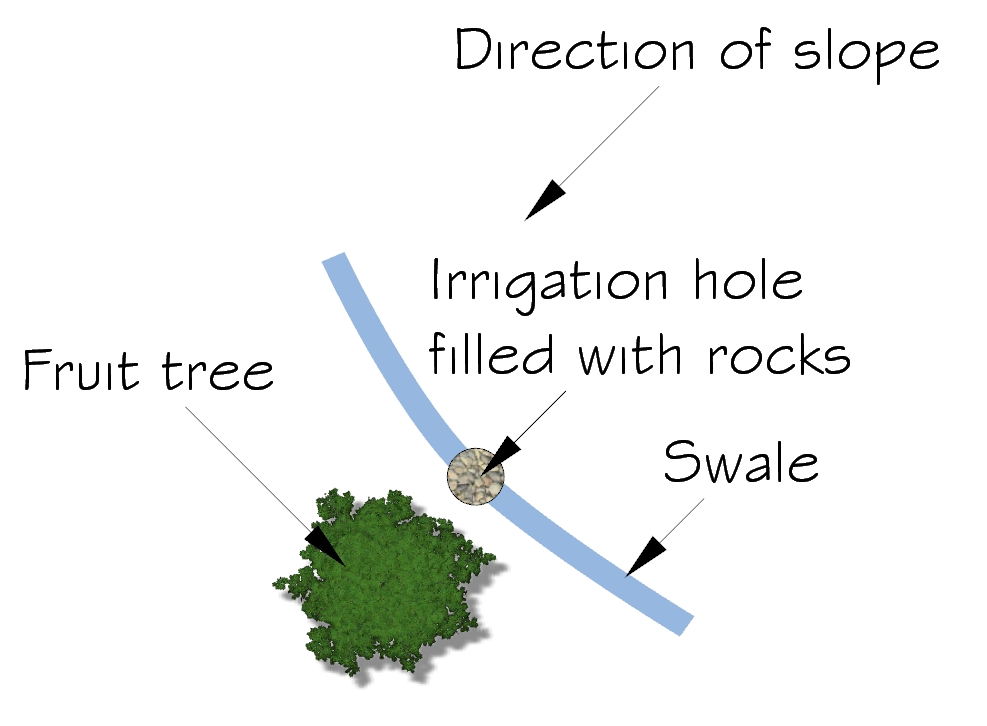
It’s been raining here so now is the perfect time to install such passive irrigation techniques. Why not run outside and create your own watery oasis!?
Jo
